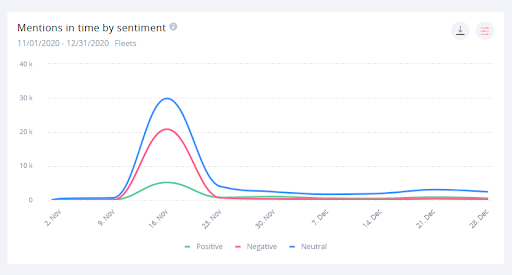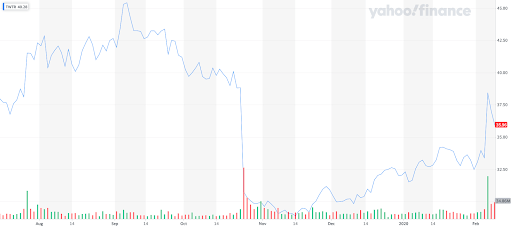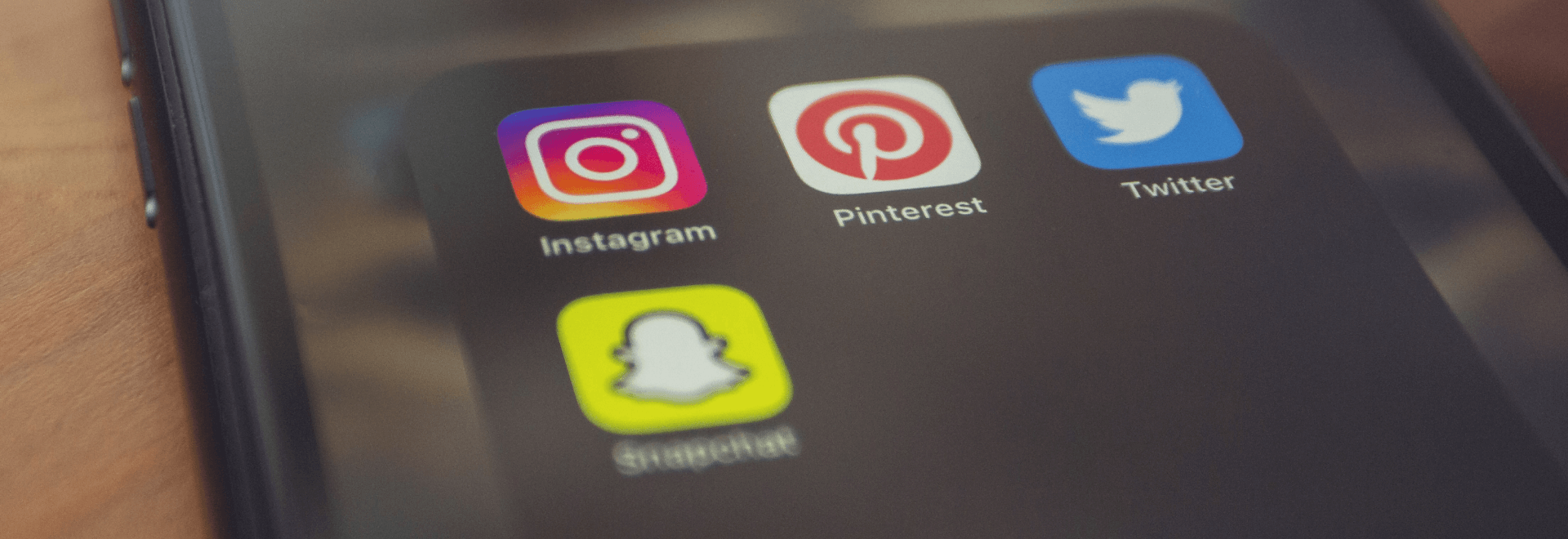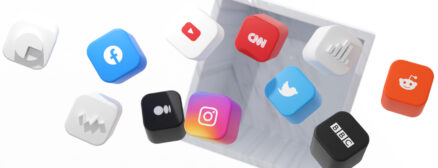Stop Aping Snapchat: a study of Stories
Hello, Social Media. We are gathered here today because we care about you — this is an intervention.
A year ago, Twitter introduced “Fleets,” its own take on Snapchat’s disappearing stories. This puzzled users and industry veterans alike. Why would we ever need stories on Twitter? Don’t we already have Instagram and Snapchat for that?
As it turns out, not even Twitter higher-ups had any real answers to that question. They admitted as much when they conceded defeat and announced the shutdown of Fleets nine months after their introduction.
What’s more interesting, perhaps, was the larger social media landscape’s reaction to Fleets. It demonstrated how out of touch with their user bases platform operators can be — hence this intervention. This needs to stop.
The Snapchat model — a laughingstock, until it wasn’t
When Snapchat debuted in 2011, it struggled. For several years, it was openly mocked in social media circles. Snapchat themselves acknowledged their less than stellar reputation, and even poked fun at itself. In HBO’s Silicon Valley, Snapchat’s CEO Evan Spiegel says during an eulogy, “That’s just the kind of guy he was—warm, generous, and not disappointed in Snapchat”.
By 2016, however, Snapchat’s fortunes started to turn. It was a surprise hit with Gen Z, who were starting to dominate popular culture. All of a sudden, they were a key demographic to capture, and Snapchat was in the perfect place for it.
Almost overnight, the platform shifted from being a sleeper hit to a key player on the scene — and then-market leaders, like Facebook or Instagram were left playing catch-up.
One of the defining features of Snapchat is disappearing stories (or “snaps” in Snapchat parlance). These, as the name suggests, consist of images or videos which disappear over time. It’s a simple concept, but one that has proven incredibly popular with the Gen Z demographic.
Only one platform thus far managed to copy this feature and turn it into a success — Instagram. Their own implementation of Stories launched in late 2016, in response to Snapchat’s roaring success. While initially criticized for not bringing anything new to the table, Instagram’s users accepted the feature. Thanks to constant development, it is now one of its core functionalities — and since Instagram has a much larger user base than Snapchat, it’s no surprise that Instagram Stories proved to be more popular in the long run.
Twitter jumps on the bandwagon, several years late
Which is all well and good, but as you might have noticed, 2016 was half a decade ago. Twitter introduced its Fleets feature in November 2020 — seemingly for no reason. What’s more, Fleets launched with extremely sparse functionality. It was always going to lose any and all comparisons to Snapchat or Instagram; their head start was too substantial to overcome.
Which, really, makes the negative reaction towards Fleets extremely predictable.

Which begs the question: why did Twitter release a feature nobody wanted, in such a rushed state?
What Fleets tried to do — and why they failed
There are many theories. Personally, I subscribe to the view that this was a move borne of desperation. Look at the timing: October 2020 was disastrous for Twitter. Late that month — on the eve of the American presidential election — Twitter’s stock fell 20% as investors started considering the possibility of Donald Trump losing. The ties between Trump and Twitter are no secret to anybody, and his loss spelled doom for the company.

As such, I believe Fleets were launched in order to placate shareholders. “Look, we’re entering a new market. We’re going to compete with Snapchat and Instagram,” would have been their argument. “If you ditch us now, you’re missing out on a potential success down the line.”
It’s not a bad idea — and you can see a tiny uptick the day after the feature was launched. The frankly laughable state of the feature and negative reception by the user base ensured it would never be a success.
Ultimately, Fleets failed for two primary reasons. Being nowhere near the functionality of Snapchat or Instagram was the first. The second was the demographic mismatch. Essentially, nobody on Twitter was asking for the feature. Zoomers only comprise around 17% of Twitter’s user base. Compare this to Instagram’s 31% or Snapchat’s 48%!
Then there’s the matter of what Twitter users are like. There’s a reason the platform inherited the “hellsite” moniker from Tumblr.
i’m cool with twitter stories as long as they’re used how they’re supposed to be: making ur life seem miserable. making ur life seem perfect is for instagram. there will be none of that here
— James (@CaucasianJames) November 17, 2020
Twitter users were also angry that the platform introduced another new half-baked feature, instead of fixing one of the myriad of issues plaguing the app.
Maybe instead of the stupid “Fleets” Twitter has forced upon us, they could just fix the thing where the tweet you’re reading disappears as your timeline refreshes.
— The Hoarse Whisperer (@TheRealHoarse) November 19, 2020
Other social media platforms follow suit, get thoroughly mocked
An unfortunate side effect of Fleets was other platforms deciding to blindly follow suit. Spotify started testing its own spin on the Stories format. The reception was, shall we say, less than enthusiastic.
Me: Not
Spotify: Not
Me: everything
Spotify: everything
Me: needs
Spotify: needs
Me: stories
Spotify: stories
….
Me: Not everything needs stories
Spotify: https://t.co/bdm8ff2rIK— Marques Brownlee (@MKBHD) November 28, 2020
Spotify Clips was officially launched in early 2021, but has since seen little attention or development. As of this writing, it’s still not available for all users of the platform. The company is currently looking to pivot the feature towards an imitation of TikTok, thus proving once and for all that it is a true innovator in the field.
LinkedIn actually debuted their stories a couple of months before Twitter — but that still didn’t save them from being widely mocked. Remember what we said earlier about demographics? LinkedIn is loathed by millennials and Gen Z, the primary audience for Stories-type content. No, really, it is.
LinkedIn has stories now. You know what’s next… pic.twitter.com/ttDkIJJ5tS
— Morning Brew ☕️ (@MorningBrew) September 24, 2020
Oct 2013: Snapchat launches Stories
Aug 2016: Instagram copies it
Feb 2017: WhatsApp copies it
Mar 2017: Messenger copies it
Nov 2018: YouTube copies it
Sep 2020: LinkedIn copies it
Nov 2020: Twitter copies itWild how closely this matches each company's reputation for shipping.
— Alec Stapp (@AlecStapp) November 17, 2020
The fact that LinkedIn decided to launch a Stories-like feed without understanding what made it successful for Snapchat and Instagram demonstrates a clear and worrying trend: social media networks are out of touch with their users. We knew this, of course — consider how many times Facebook changed their interface so as to have less features, less clarity.
Against all better judgement, LinkedIn also decided to follow the latest trend, no matter how misguided — and no matter what its users actually want. Their Stories experiment, obviously, failed. It was mercifully put out of its misery in August 2021.
This sucks. I met my wife on LinkedIn Stories https://t.co/rMeA6gpYWI
— Casey Newton (@CaseyNewton) August 31, 2021
Conclusions
The primary takeaway from this rather embarrassing saga should be simple: don’t blindly follow trends. Listen to your users instead of your shareholders — they know your platform better than you do.
In HBO’s cult series The Wire, the fan-favourite character Omar Little delivers a warning to a gang of drug dealers: “You come at the king? You best not miss.”
While managing a social network is a far cry from surviving on the cold corners of Baltimore streets, the lesson still rings true. Gen Z and millennials make up the majority of social media users. It’s no surprise, then, that platform owners try to appeal to them.
Those efforts must come from a place of sincerity, however. You can’t just throw together features you see working on other platforms without devoting time and effort into understanding what’s behind the success. Failure, in this case, means ceaseless mockery — and once you’re mocked by zoomers and branded “uncool,” there’s no coming back from it. Facebook is currently learning that the hard way — it’s been bleeding young users for years.
So what’s the lesson? Stop trying to appeal to Gen Z if you don’t understand what makes them tick. Focus on making your product the best it can be for your existing customers. Insincerity never pays off in the long run.
Ultimately, the only lasting legacy of the Fleets saga will be the mockery. Will you learn your lesson?
Can we start 2022 by facing the fact that NFTs, which in 2021 attracted copious media coverage and buy-in from top investors and brands, reportedly has less than 400,000 actual owners — less than 40,000 of whom own 80% of all NFTs value?
That’s a niche of a niche of a niche. https://t.co/oguASTdDFu
— Wagner James Au (@slhamlet) January 3, 2022
No, of course not. How silly of me.



